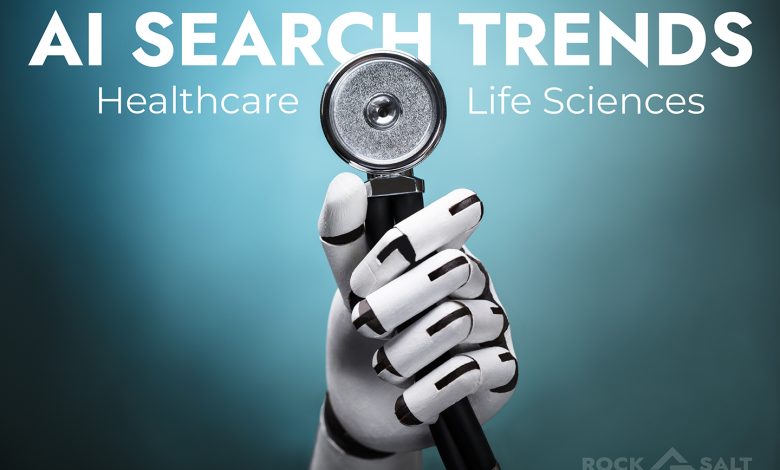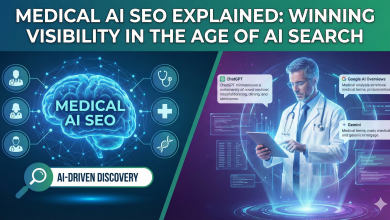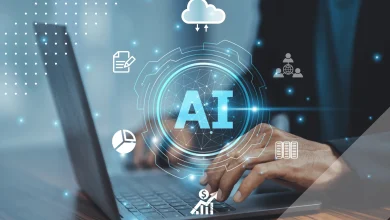
AI search is rapidly transforming the way businesses and consumers across industries approach digital discovery and engagement. In this article, I explore emerging AI search trends and their impact on the modern business world, with a particular focus on the healthcare and life sciences sectors. By comparing general AI search advancements to the unique demands and behaviors of audiences in health, wellness, and life science spaces, I highlight key insights into this evolving online environment. My ultimate goal is to outline why integrating AI search engine optimization (AI SEO) strategies is critical for businesses in these industries to stay competitive and effectively reach their audiences.
I’ll start by defining what AI search is, and why you should care.
What is AI Search?
AI search refers to the use of AI-powered tools and chatbots like ChatGPT, Claude, Perplexity, and Gemini to discover brands, services, and products that align with user preferences.
These Large Language Models (LLMs) go beyond traditional search engines by offering personalized, context-aware recommendations based on user intent. Unlike basic keyword searches, AI search leverages advanced technologies like natural language processing and machine learning to understand deeper queries and deliver precise, tailored results. The convenience and context-rich nature of AI chatbot responses have led to an exponential surge in LLM usage and evolving consumer search behavior.
Why Does AI Search Matter?
AI search is fundamentally transforming how businesses connect with their audiences, and recognizing its importance is critical for sustained digital relevance. While traditional Google search frequency remains undiminished, the adoption of AI search tools is rapidly progressing. By mid-2025, clickstream data from Datos and Sparktoro showed that just over 1 in 5 Americans were heavy AI tool users (10+ uses per month), while nearly 40% used at least one AI tool monthly, and 95% still relied on traditional search engines just as heavily as before. Users across demographics are increasingly turning to AI chatbots in their product and service research (in addition to their continued use of Google, Bing, and Yahoo), and that certainly includes your audience(s)!
Let’s explore these developments a bit further. I’ll detail general consumer AI search trends first, and then compare them with search behavior shifts unique to the healthcare and life sciences industries.
General AI Search Trends
AI-powered search is expanding, not replacing, traditional search methods. While adoption rates vary across industries, LLMs are increasingly used for finding answers online across all searcher demographics, and often power conventional search engines, where the user doesn’t have much of a choice but to consume AI-generated answers to their questions. Google’s AI Overviews, for example, now appear in up to a third or nearly half of all keyword searches, depending on the data set being analyzed. For informational queries, these numbers are much higher, with one study showing that 88% of queries that trigger AI Overviews have informational search intent.
While these emerging search behaviors suggest the increasing importance of businesses optimizing their content for LLMs, AI search optimization—often called AI SEO, AEO, or GEO—has not diminished the value of traditional SEO. Since LLMs frequently train on and retrieve data from Google and Bing, and because 95% of Americans still use conventional search engines (much higher than the rates of LLM use detailed previously), your existing SEO efforts continue to be foundational to online visibility. A dual approach that optimizes for both AI-driven and traditional search engines is essential for maintaining a strong, relevant digital presence and addressing a broader audience. This is especially the case for companies operating in the health and science sectors.
AI Search Trends in the Healthcare and Life Sciences Sectors
While AI search trends in the healthcare and life sciences industries follow the same general trends outlined above, the pace of LLM adoption seems to be significantly more rapid in these verticals. Notably, nearly 14% of U.S. adults now leverage LLMs as their primary source for health-related information, a drastic increase from previous studies. This increasing trust in AI-generated health content stems in large part from LLMs’ proven ability to explain complex medical information in plain, accessible language, which many users find is not the case with many of their human providers. These users are also relying on AI chatbots to support them in their searches for clinics, providers, and products.
While this data represents the average American consumer’s behavior when researching health-related topics with AI chatbots, researchers and scientists in the market for life science products are also increasingly turning to LLMs for product research. I discovered this after building a proxy audience of life science researchers and scientists at universities and private corporations by seeding a significant sample of 50 of the most searched transactional/commercial life science keyword searches, as well as 20 of the most visited health and life science URLs, and analyzing the audience’s LLM usage. Sparktoro’s behavioral data suggested that, by November 2025, this audience was 41% more likely to use ChatGPT, 105% more likely to use Perplexity, and 64% more likely to use Claude than the average American internet user.
To further corroborate these trends with external data, we utilized Scrunch’s AI Search Trends database to analyze more than 102 million prompts across 49 healthcare and life science topics searched from August to October 2025, and discovered a substantial 17.6% average increase in prompt volume from month one to month three. Moreover, even if these users don’t actively seek out AI-generated answers to their queries, they’re nonetheless exposed to AI search results in their research. My analysis of Semrush’s Sensor tool revealed that AI Overviews appeared in +14% of health-related searches and +24% of science-related searches from October to November 2025, highlighting a consistent growth rate since May of the same year.
Consider Incorporating AI SEO Into Your Digital Marketing Strategy
By leveraging AI SEO services, businesses in the healthcare and life sciences industries can achieve significant competitive advantages in a growing digital marketplace. With your patients and customers adopting AI chatbots at a much faster pace than the general public, and AI Overviews appearing for an increasing percentage of health- and life science-related searches, AI SEO ensures that your content remains visible, credible, and relevant to your target audience. This proactive approach not only positions your business as an industry leader but also drives higher engagement and conversions by meeting users where they are. Keep in mind, however, that because healthcare SEO sits at the intersection of marketing, medical accuracy, and regulation, it’s worth working with an AI SEO agency that understands HIPAA and PHI constraints in addition to search marketing.
Furthermore, integrating AI SEO into your digital marketing strategy empowers your business to stay ahead of evolving search engine trends and consumer behaviors, while your competitors may be slow to adapt. AI algorithms continue to reshape the internet, and those who adapt early will reap the benefits of enhanced organic visibility and more accurate targeting. For healthcare and life sciences professionals, this means reaching audiences with critical, timely, and trustworthy information, ultimately fostering trust and driving growth in an increasingly competitive field.



